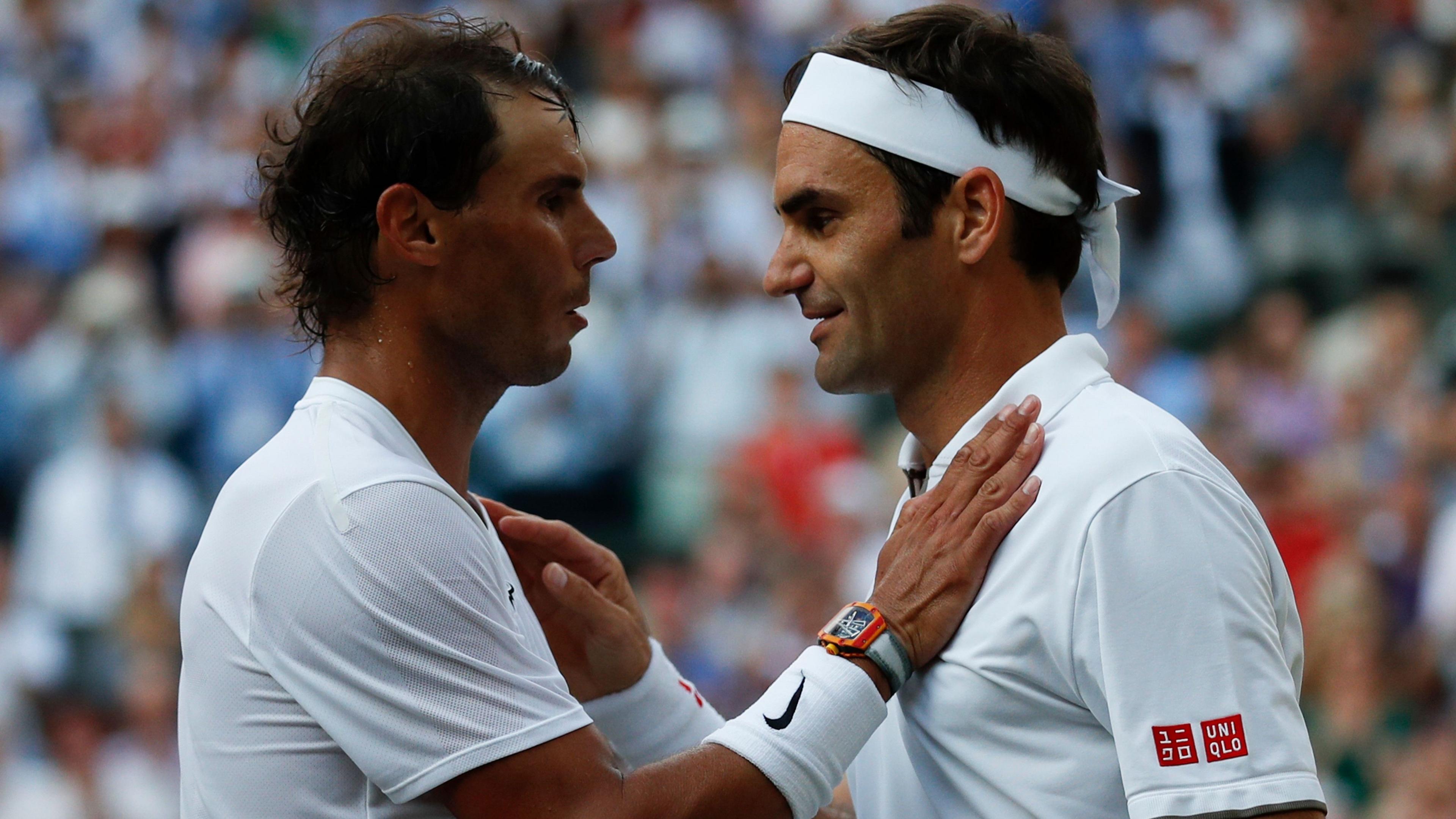'Nadal - the son every mum would love to have'

- Published
One of my favourite Rafael Nadal quotes was delivered at the French Open in 2014.
"I think that our generation is now on the way out," the Spaniard said.
"We have been here for a long while. A generation is walking away and others will replace us. It will not come overnight, but it will come."
Nadal uttered those words 10 years ago. Since then, he has won another nine Grand Slam titles, a fourth Davis Cup trophy and enjoyed five further spells as world number one.
How very typical of his stellar generation.
Tennis legend Nadal to retire in November
- Published10 October 2024
Serena Williams nearly made it to 41, Roger Federer was playing at Wimbledon a month before his 40th birthday, Andy Murray defied medical predictions to battle on until 37 and Novak Djokovic could yet outdo the lot of them.
Nadal played Djokovic 60 times over an 18-year period, but it is his rivalry with Federer which was the heartbeat of his career.
They would often both walk on to court wearing a bandana, but that is where the similarities ended.
Nadal might choose a sleeveless top and pirate pants; Federer a cream cardigan embossed with his initials.
With the coin toss complete, Nadal would sprint in zig-zag formation to the baseline as Federer took a leisurely stroll to the back of the court.
Federer's grace and economy of effort belied his aggressive instincts. If the workings of his engine were carefully concealed, you could see the pistons pumping and sparks flying when Nadal took to court.
The physicality of his performances was breathtaking, the intensity of his spin intimidating, and the banana-shaped forehand down the line a devastating crowd-pleaser.

Nadal won 24 of his 40 matches against Federer, including their first meeting on a Miami hard court in 2004.
But two in particular stand out.
The Wimbledon final of 2008 was one of the all-time great sporting duels. Too excited to sleep much the night before the final, Nadal watched films until the early hours, but in fading light that same evening denied Federer a sixth consecutive title by taking the deciding set 9-7.
Nine years later, Federer recorded perhaps his greatest triumph by recovering from 1-3 down in the fifth set of the 2017 Australian Open final to triumph at the age of 35 and in his first competitive event for six months.
Nadal was also there at the end for Federer as they cried and held hands after the older man's farewell appearance at the Laver Cup in 2022.
Their mutual affection was often evident on court and shone through when they met to promote a 2010 charity match in Switzerland.
"Do you know what you are going to get me for Christmas, Rafa?" asked Federer.
The giggling became contagious and only after many, many takes did Nadal finally manage to spell out that he would indeed be coming to Zurich to play the following October.
If you think of Nadal, you think of Federer - and also of Roland Garros.
Nadal won the title there 14 times and has a permanent presence in steel form of a 3m tall statue.
Nadal selected 2006 and 2010 as his two favourite triumphs when speaking to the BBC before the clay-court major in 2015.
"2006 was a special one because I got a very important injury at the end of the year, [a very rare congenital condition in his left foot] and the doctors were not very positive about whether I would be able to be competitive again at the highest level," he recalled.
"And obviously 2010, after losing in 2009, was very, very special."
That fourth-round defeat by Sweden's Robin Soderling was Nadal's first loss in Paris. It was a stunning moment, a shock heard round the world, and one which only a select few can be party to.
The Nadal I encountered in interview rooms and player areas was always very personable. He would shake hands with the entire crew if the interview was on camera, and there would often be an embrace for the stenographers busily transcribing his thoughts.
We will miss the quizzical expression, and the raised left eyebrow, as he fielded questions.
We may not miss the slow play, but I am already nostalgic for Rafa's routines.
The serve which followed the picking of his shorts; the lifting of his shirt from both shoulders; the squeezing of his nose and the running of his fingers through the sweaty hair above his ears.
And the two bottles which, after taking a sip from each, had to be replaced meticulously in exactly the same spot a few centimetres apart.
Rafael Nadal: One of the greats of tennis
I have not yet mentioned the knees, which cost Nadal a lot of time on court. He often said he loved to play on hard courts but his body did not appreciate it as much.
"Maybe we are going to pay the price at the age of 45," he said in Indian Wells in 2019.
"When I see some old legends walking around the tour, it is tough to see."
The upside is 22 Grand Slam titles, Olympic gold in both singles and doubles, a part in four Spanish Davis Cup victories and 209 weeks as world number one - as well as something much harder to achieve, and perhaps more special than anything which can fit in a trophy cabinet.
"I think Rafa went further than being a great tennis player," compatriot Feliciano Lopez told the BBC in a 2015 documentary on Nadal.
"In society in general in Spain everybody loves him as a person. The way he behaves on the court - always fighting till the end - this is what makes the connection with the people possible.
"He is the son every mum would love to have."
